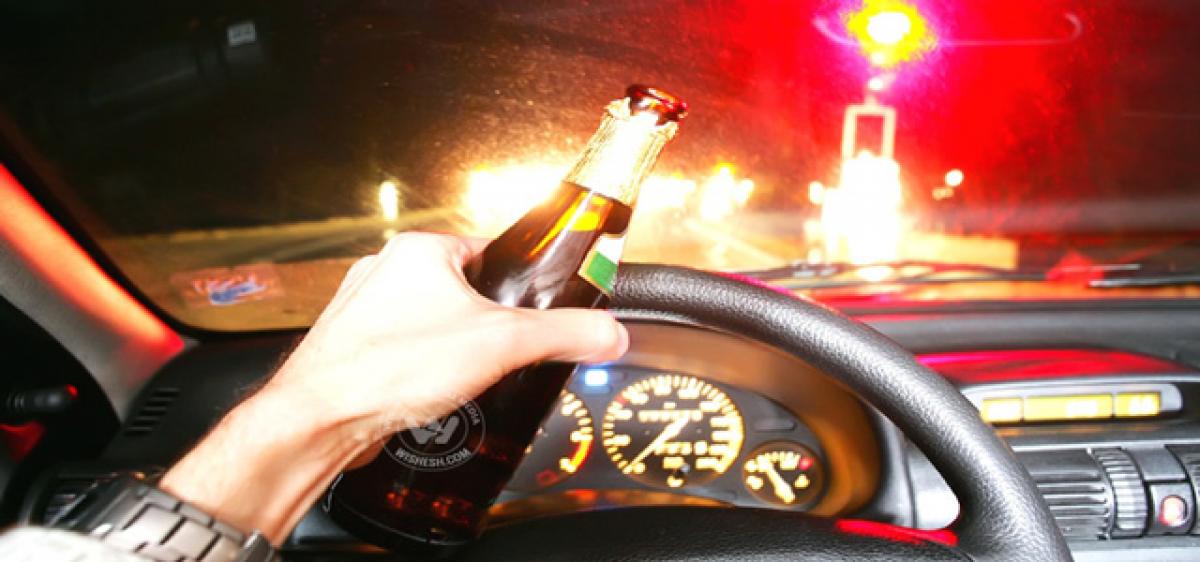Live
- ‘Get Set, Grow Summit 2024’ Focuses on Digital Detox for Families
- Stokes motivates his team to put in extra effort, says England pacer Potts
- From overcoming setbacks to leading India in U19 Women’s Asia Cup, Niki Prasad's amazing journey
- Driving Enterprise Security: Inside Venkata Reddy Thummala’s Leadership Journey
- Constitution debate: PM Modi hails 'Nari Shakti'; makes strong pitch for 'United Bharat’
- Abhijeet Bhardwaj: Revolutionizing Enterprise Analytics with Innovation and Expertise
- Bihar: Inquiry initiated against principal who went to buy veggies during school hours
- Press Sri Lankan Prez for release of Indian fishermen: TN Cong MP to EAM Jaishankar
- TN: DMK postpones executive meet due to heavy rains & Parliament session
- Porous silicon oxide electrodes can fix durability issues in batteries: Researchers
Just In

India’s daily drink-driving death toll of 19 could be reduced if police checking is made unpredictable to drivers who currently know where to expect checks, a new collaborative study between American researchers and Rajasthan police has found.
India’s daily drink-driving death toll of 19 could be reduced if police checking is made unpredictable to drivers who currently know where to expect checks, a new collaborative study between American researchers and Rajasthan police has found.
Conducted over two years in 2010 and 2011 and released in May 2017, the study's main solution: Setting up checkpoints at random in areas with the potential for violations rather than regular checkpoints because drivers tend to know this and change their routes.
Researchers from the Abdul Jameel Poverty Action Lab (J-PAL), a research unit at the Massachusetts Institute of Technology in Boston, US, partnered with the Rajasthan state police to implement and evaluate an anti-drink driving programme.
They found that night accidents in an area covered by a particular police station reduced by 17 per cent, and deaths by 25 per cent over a two-month crackdown and six following weeks.
In 2015, 501,423 road accidents were reported in India, of which 16,298 (3.2 per cent) were attributed to driving under the influence of alcohol, according to the latest available data from the Ministry of Road Transport and Highways (MORTH). The data further reveals that 6,755 people died and 18,813 injured in drink-driving accidents in 2015.
The J-PAL study's findings hold significance as drink-driving causes more deaths on an average than any other error on the driver's part. The 2015 MORTH report classifies accidents in terms of driver's responsibilities. Intake of alcohol caused one death per 2.4 accidents, followed by overtaking on hill roads (one death per 2.9 accidents) and improper passing (one death per 3.06 accidents).
While drink-driving accidents accounted for only 1.5 per cent of all accidents, according to NCRB data, they were the deadliest, having a higher fatality rate than other causes. As many as 42 per cent of victims of drink-driving accidents died, compared to accidents caused by over-speeding (30 per cent), reckless driving (33 per cent), and weather conditions (36 per cent).
However, these figures may not be accurate. "Accidents caused by drink-driving are likely to be an underestimate," Daniel Keniston, co-author of the study and assistant professor at Yale University, told IndiaSpend. "If the police arrive late at the scene of the accident it is difficult to determine whether alcohol was involved."
In absolute terms, overspeeding claimed 64,633 lives, more than any other cause. Of 183 police stations across 10 districts in Rajasthan, 123 were randomly chosen for the study. These stations formed the treatment group (called "treatment stations"), the remaining police stations formed the comparison group and did not receive specific instructions or additional resources to for enforcement.
J-PAL researchers employed a "selective breath checkpoint methodology", which involved the following: Frequency of roadblocks: To examine the relationship between policing intensity and criminal behavior, treatment stations were randomly assigned to carry out a roadblock, either one, two, or three nights per week. Roadblocks were always between 7 pm and 10 pm.
Location of the roadblocks: To test the effectiveness of surprise checkpoints at random locations compared to fixed checkpoints, police stations were randomly assigned to hold their roadblocks at either the best location to apprehend drunk drivers, as selected by the local chief of police, on the same day every week; or one of three best locations for catching drunk drivers, again as chosen by the local chief of police, with each night's location chosen at random.
Over the two years of the study, researchers used administrative data, court records, data collected from breathalysers and surveys of random checkpoints to gather information on road accidents, deaths and police performance. The results were clear: Only the police stations with checkpoints rotated around the best three locations showed significant decreases in night-time deaths and accidents.
When breathalyser checks were conducted at one location only, within a couple of days most of drivers switched to alternative routes, which then reported as many road accidents or deaths. "We found that the special enforcement teams performed better on every parameter compared to the team from the local police station," said Keniston. Two factors may explain this performance.
First, the special teams faced stronger incentives. Second, the special teams may have been more focused on their work, and less prone to the distractions and burdens of other police duties." (In arrangement with IndiaSpend.org)
By Devanik Saha

© 2024 Hyderabad Media House Limited/The Hans India. All rights reserved. Powered by hocalwire.com







